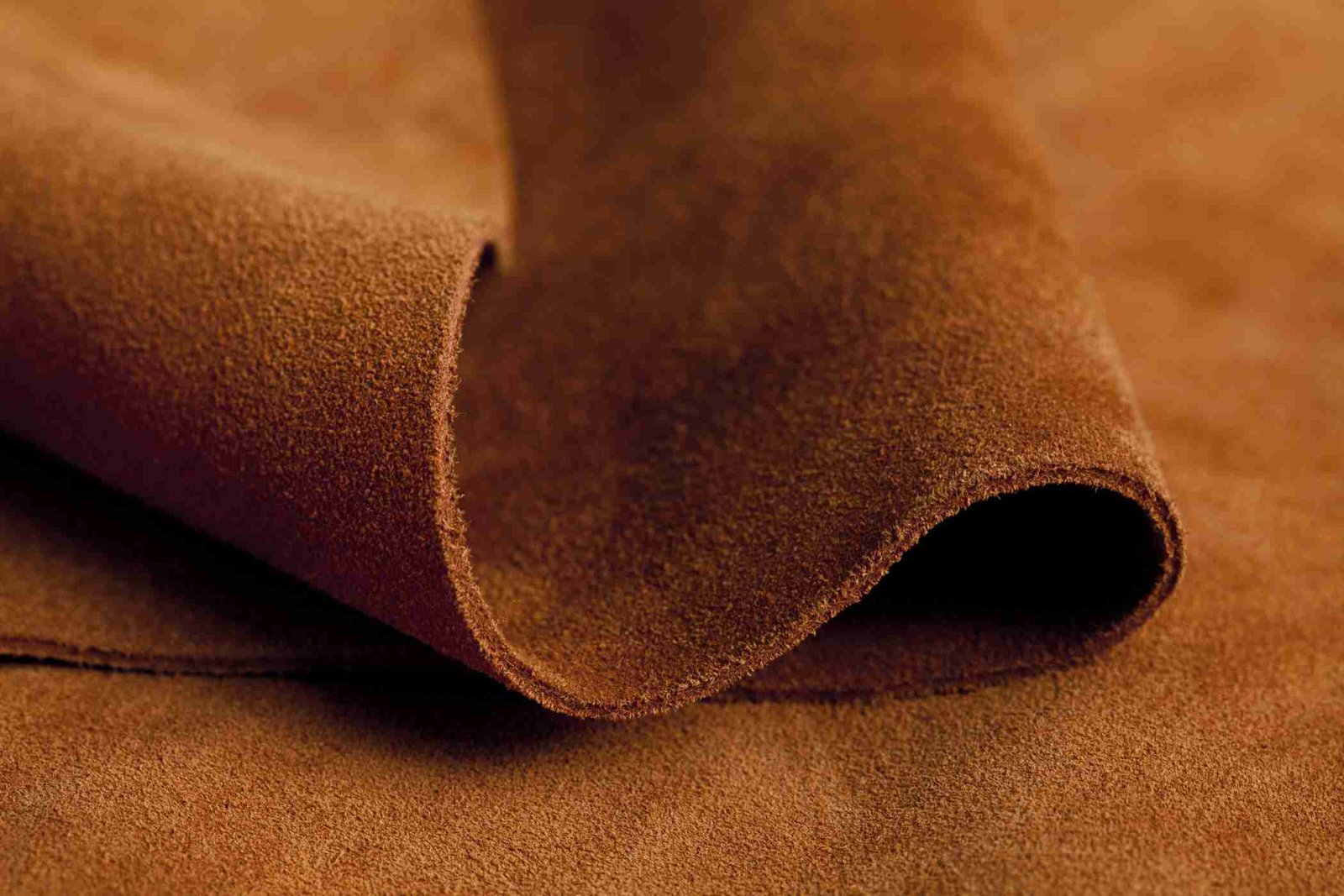What is Suede Leather Made Of?
Introduction to Suede Leather
Suede leather, distinguished by its soft and napped finish, stands out among other types of leather for its unique texture and aesthetic appeal. This material is created from the underside of the animal hide, imparting a velvety surface that is both tactile and stylish. The process of making suede brings forth a leather that is more pliable and lightweight compared to its counterparts, making it an ideal choice for various applications.
In the realm of fashion, suede has established itself as a timeless favorite. It is commonly used in the production of footwear, such as boots and loafers, where its plush finish adds a luxurious touch. Suede jackets and skirts are staples in many wardrobes, offering a blend of sophistication and comfort. Beyond clothing, suede’s versatility extends to accessories like handbags, belts, and gloves, which benefit from the material’s distinctive look and feel.

Suede also finds a significant place in upholstery and interior design. Its soft texture makes it a popular choice for furniture coverings, adding an element of opulence to sofas, chairs, and cushions. The use of suede in home decor not only enhances aesthetic value but also provides a cozy and inviting atmosphere.
Historically, suede leather has undergone a fascinating evolution. The term “suede” is derived from the French phrase “gants de Suède,” which translates to “gloves of Sweden,” hinting at its European origins. Initially, suede was primarily used for gloves due to its fine grain and softness. Over time, technological advancements in leather processing have expanded its applications, solidifying suede’s status in the leather industry. Today, it is celebrated for its blend of elegance and practicality, making it a material of choice for designers and consumers alike.
The Leather Production Process
The journey of transforming rawhide into the luxurious material known as suede leather encompasses several meticulous steps. Initially, the fresh hides, often procured from animals such as lambs, goats, calves, and deer, undergo a soaking process. This step helps remove dirt and ensures that the hides are adequately hydrated for subsequent procedures.

Following soaking, the hides are subjected to a liming process, where they are treated with lime or other alkaline substances. This treatment aids in the removal of hair and any remaining flesh. After liming, the hides proceed to the fleshing stage, where any remnants of meat or fat are meticulously scraped off, producing a clean and uniform surface.
Tanning is a crucial phase in the leather production process. It involves soaking the hides in tanning solutions that convert the rawhide into a more stable and durable material. This not only enhances the hide’s longevity but also prevents decomposition. Various methods of tanning exist, including vegetable tanning, using natural tannins from plants, and chrome tanning, which employs chromium salts for quicker processing.
Once tanned, the hides undergo splitting. This step involves dividing the hides into two or more layers. Suede leather specifically utilizes the underside of the hide. This underside is buffed and sanded to achieve suede’s characteristic napped texture, creating a soft, velvety finish. The buffing process raises fibers on the surface, attributing to suede’s distinctive appearance and feel.
The final stages involve sorting, dyeing, and finishing the suede leather to meet specific aesthetic and functional requirements. The result is a versatile and elegant material favored in the fashion and upholstery industries. Thus, the production of suede leather is an intricate process, requiring skill and precision to yield this luxurious fabric.

Different Types of Suede
Suede leather is renowned for its soft, velvety texture and distinct appearance. However, what many may not realize is that there are various types of suede available, each bringing unique characteristics depending on the animal source and tanning process. Let’s delve into some of the prevalent types of suede leather you may encounter in the market.
Pig Suede: Pig suede is a popular type of suede leather, characterized by its robust texture and durability. Since pig skin has a thicker hide, the suede derived from it tends to be more textured with a noticeable grain. Pig suede is advantageous for items that require a bit more toughness, such as shoes and rugged outerwear. The texture provides a non-slip quality, making it suitable for both utilitarian and fashion-forward applications.
Calf Suede: Calf suede, derived from the hide of young cattle, is known for its delicate, fine texture and lightweight feel. It boasts a smooth, supple surface that is particularly appreciated in high-end fashion items. Due to its softer and finer nature, calf suede is often used in luxury goods, including designer footwear, handbags, and clothing. It is less durable compared to pig suede but offers a more refined and sophisticated appearance.
Split Suede: Split suede refers to leather that has been split from the rest of the hide, usually from cows. This type of suede is generally less expensive and more abundant. The split can either be from the top grain layer, which is softer, or the bottom layer, which is coarser. Despite being a more affordable option, split suede can still offer a high-quality look and feel, making it suitable for a variety of applications such as furniture, accessories, and apparel.

The quality, texture, and durability of suede are significantly influenced by the type of animal skin and the tanning process. For instance, veg-tanned suede tends to be stiffer and has a more natural appearance, while chrome-tanned suede is softer and more consistent in color. Understanding these differences can aid consumers in making informed choices, ensuring that the suede leather they select aligns perfectly with their needs and preferences.
Caring for Suede Leather
Maintaining the appearance and longevity of suede leather requires diligent care and attention. Suede leather is prized for its soft, textured surface, but this also makes it susceptible to water, stains, and wear. To protect your suede items, it is crucial to employ effective preventive measures and use appropriate cleaning products.
First and foremost, applying a protective suede spray can create a barrier against moisture and stains. It is advisable to treat suede items with this spray regularly, typically every few months, to maintain their water-repellent properties. This simple step can significantly reduce the risk of water marks and other blemishes.


